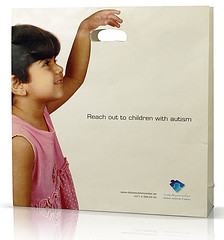 Government researchers have reported recently that one in every six American children born today has developmental disability which includes ADHD and autism. That is a sharp 17% rise from the data collected 10 years ago.
Government researchers have reported recently that one in every six American children born today has developmental disability which includes ADHD and autism. That is a sharp 17% rise from the data collected 10 years ago.
The study that was published in “Pediatrics”, discovered that around 15% of American children between 3 and 17 years old have been diagnosed with the disorder between 2006 and 2008; that is a total of 10 million children. In comparison, only 8 million children were diagnosed between 1997 and 1999.
Although researchers saw a general increase in developmental disability cases, including learning disabilities and stuttering, the increases were most significantly seen in ADHD and autism cases. ADHD cases, for example, rose from 5.7% in 1997-1999 to 33% in 2006-2008.
The study noted that more boys were diagnosed with the disability than girls. Males have higher tendencies of inheriting genetic disabilities than females. Also, ADHD symptoms are more pronounced in boys than in girls; thus, the former is more easily diagnosed than the latter.
Some other important findings of the study include the fact that ADHD and autism cases are higher among children on Medicaid and those who are from low-income families. Also, researchers noticed that cases of developmental disabilities are lower among Hispanic children than black or white Americans. They, however, noted that the language barrier may be the reason for this data and it may not necessarily reflect the correct rate.
It is still unclear to the researchers why there was a significant increase in the cases of ADHD, autism, and developmental disability in general. However, they said that it may be due to the increase of preterm labor and the mother’s age during pregnancy. Children born prematurely have 30% to 60% more chances of developing ADHD than those who were born full term. Also, mothers who give birth in their 40s have greater chances of having an autistic child than those who are in their 20s.

